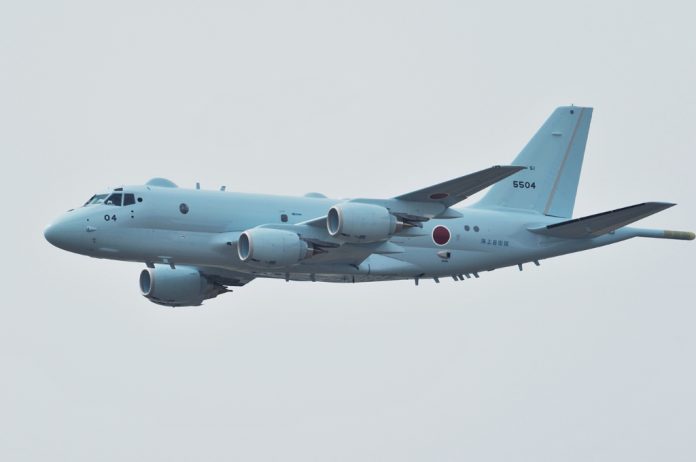Recent budget documents released by the Japanese Ministry of Defense (MoD) has revealed its intent to seek additional funding to develop a new electronic warfare (EW) aircraft for the Japan Maritime Self-Defense Force (JMSDF).
According to the documents, the MoD has requested ¥41.4 billion (approximately US$290 million) for fiscal year 2025 to continue development of a new EW platform based on the Kawasaki P-1 maritime patrol aircraft (MPA). The MoD earlier secured ¥14.1 billion for fiscal year 2024.
“In order to respond to the increasingly complex electronic warfare environment, an electronic warfare aircraft will be developed based on the P-1…contributing to strengthening the electromagnetic domain capabilities required for cross-domain operations,” the MoD stated.
The MoD noted that the new EW aircraft program is part of a broader effort to “strengthen Japan’s deterrence and response capabilities” by developing “equipment capable of neutralising enemy radar and communications”.
A preliminary graphic of the P-1 based EW aircraft shows several conformal antenna blisters on the top of the fuselage and under the nose.
This development also seeks to provide a highly automated information gathering and analysis capability for long-range and persistent airborne observation, detection, tracking, and classification, thereby improving the Self-Defense Force’s operational performance.
The JMSDF currently operates five Lockheed EP-3 Orion special mission aircraft – which perform a range of roles including communications and signals intelligence (COMINT and SIGINT) – that were first introduced in the early 1990s, which are becoming increasingly obsolescent in a rapidly changing operating environment as well as harder to maintain beyond the mid-2020s.
The MoD also pointed out the challenges of acquiring foreign-made systems, given the sensitive nature of such operations.
“In implementing this project, we aim to shorten development time and reduce costs by utilizing the existing P-1 and the results of previous research, as well as by utilizing [commercially available] products,” the MoD stated.
by Jr Ng












